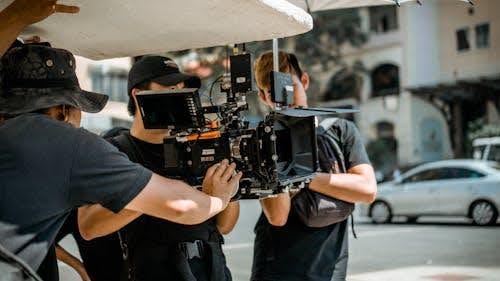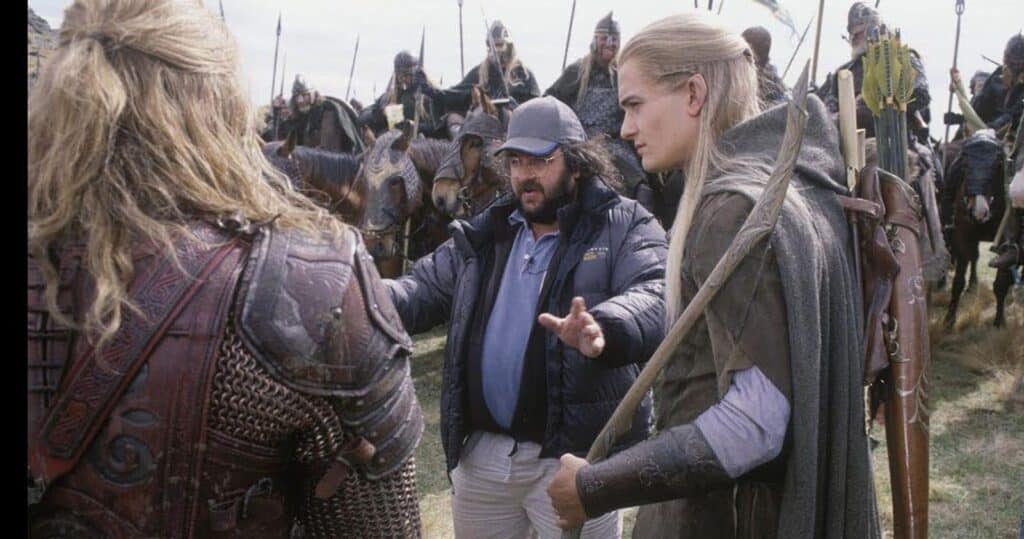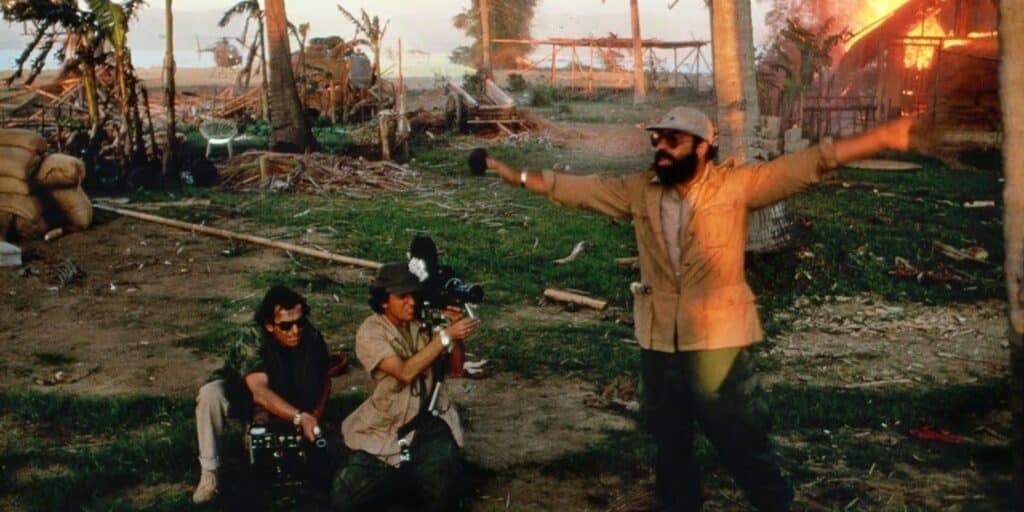
So, you’ve written a screenplay, have assembled your team of creative experts, and now it’s time to start shooting. Whether you’re producing a short film, independent feature, or a big-budget blockbuster, learning how to make a shooting schedule is a crucial step in ensuring a smooth production. A solid shooting schedule ensures efficiency, minimizes costs, and keeps everyone on the same page.
Without a clear plan, your production could quickly descend into absolute chaos. A shooting schedule is your helping hand in keeping all aspects of your production organized so you can complete every scene on time with all the resources you need in place.
In this guide, we’ll walk you through what a shooting schedule looks like and how to create one that keeps your film production on track. From a walk through of how to schedule your production, to understanding the fundamentals of a shooting schedule and utilizing Celtx for seamless planning, we’re here to help keep your production on track!
Let’s dive into how to make a shooting schedule that keeps your project on time and on budget.
Shooting Schedule Explained: What Does a Shooting Schedule Look Like?
First of all, what is a shooting schedule?
A shooting schedule is a detailed plan that outlines when and where each scene of a film will be shot.
It accounts for key logistical elements such as locations, actor availability, crew requirements and equipment. Essentially, the schedule is a roadmap for the entire production team, no matter their role, ensuring that everything comes together in a coordinated manner.
So, who creates the schedules? Well, they’re typically generated by the First Assistant Director (1st AD) in collaboration with the producer and director. The 1st AD will source all the information they need from the script breakdown, which identifies the essential elements for every single scene, including props, costumes, and special effects (if applicable).
By carefully planning sequences of scenes, your team can maximize workflow and prevent unnecessary downtime. It’s all about making the best use of the resources available to you and ensuring each production day is as productive as possible.
Meticulous planning like a shooting schedule also helps maintain the creative vision of the project. Production teams working under ideal conditions and not dealing with last-minute adjustments makes for a well-run and more productive working environment.

Why a Production Schedule is Essential for Filmmaking
It may be extremely tempting to just wing it when it comes to shooting your movie, but here are five reasons why you should seriously consider creating a shooting schedule:
1. Maximizes Efficiency
With a structured schedule, you can group scenes that require the same location, actors, or lighting setup together.
Not only does this minimize the number of location changes and overall setup times, but it also just makes production smoother and more cost-effective.
2. Controls Budget
As we know, time is money in filmmaking. An inefficient schedule can lead to overtime pay, extended rental fees, and other unforeseen expenses.
If you carefully organize shoot days, you automatically limit unnecessary expenses and can plan ahead for where your finances will be allocated. If your production is an independent one with a tight budget, this is especially important as cost overruns could jeopardize your entire project.
Learn more about how to create a budget for your production – regardless of size – with our comprehensive film budgeting blog!

3. Keeps the Crew Focused
A clear plan ensures that everyone on your set knows their responsibilities and what’s coming next. Clarity reduces confusion, boosts morale on set and maintains a productive work environment for everyone involved.
When crew members understand the objectives for each day, they can work more effectively leading to higher-quality results and a positive atmosphere.
Related Reading: Beyond the Set: Exploring Different Jobs in the Film Industry
4. Minimizes Risk
We highly recommend also adding a contingency plan to your schedule. From weather changes to actor availability, many variables can affect production. A solid schedule helps anticipate and mitigate these risks as much as possible.
5. Meeting Deadlines
It doesn’t matter if you’re working on a studio-backed project or an independent film, staying on schedule ensures that post-production starts on time and that you can meet distribution deadlines, release dates, and contractual obligations.
Key Components of a Shooting Schedule
A shooting schedule is fully comprehensive, including several key elements that ensure clarity for your whole crew.
Here are the elements you should consider including in your own schedule:
Scene Order and Breakdown
Most productions won’t film in chronological order, but instead will group scenes based on location, actors, and set requirements.
Begin by listing all the requirements for each scene and work out which ones you can shoot at the same time.
Call Sheets
Call sheets are documents that outline the individual days of your shooting schedule: call times for cast and crew, locations, scene details, and key contact information.
They serve as a communication tool, keeping everyone informed about each day’s schedule and logistical details.
For more on call sheets and how to create one in Celtx, check out our dedicated blog here!

Location Logistics
Each scene’s location must be secured and accounted for in the schedule, ensuring travel time and permits are considered. Locations should be scheduled in a way that reduces excessive transportation and maximizes productivity.
Actor Availability
Schedules must align with actors’ commitments, ensuring they are available when needed without excessive waiting times. Proper planning prevents scheduling conflicts, allowing the actors to perform at their absolute best.
Crew Requirements
Different crew members will be needed for various scenes, so consider how their schedules can be coordinated to avoid delays. You want the right people on set at the right time!
Equipment and Props
Schedule specialized equipment and essential props to ensure they’re available on the days you need them. There’s nothing worse than a last-minute scramble when you don’t have the right tools on hand.
Weather Considerations
Your outdoor shoots must account for potential weather disruptions, requiring backup plans or alternative shooting dates. Monitoring weather forecasts and planning for contingencies can prevent costly interruptions to your production schedule.

Contingency Days
Finally, contingency days are going to occur, no matter how well you plan. Unexpected issues will arise at some point. Build buffer days into your schedule to help accommodate any delays.
By having these in place, you’re giving you and your crew flexibility, allowing the production to stay on track, no matter what happens.
A well-structured shooting schedule can save you time, money, and headaches.
Get started with Celtx and streamline your pre-production process today.
How to Make a Shooting Schedule: Step-by-Step Guide
Strategy, strategy, and strategy is what you need when building a schedule for your movie shoot.
Check out our step-by-step guide on how to create your own shooting schedule:
Step 1 | Break Down the Script
All roads lead back to the script. Start by identifying all essential elements of each scene, including locations, actors, props, costumes, and special effects.
Once you have everything listed, you can determine logistical needs and guide the scheduling process.
Step 2 | Organize by Location
Group scenes that use the same location to minimize travel time, setup and teardown efforts. You want your production to be as efficient as cost-effective as possible.
An example of some of the best organization was with Peter Jackson’s mammoth feat of filming the Lord of the Rings Trilogy (2001-2003) back-to-back in a gruelling 438-day schedule across New Zealand.
This would have required meticulous planning, and filming scenes from all three movies out of sequence based on actor and location availability.

Step 3 | Prioritize Based on Actor Availability
Coordinate your schedule to ensure actors are only called when necessary, reducing idle time and optimizing their availability.
Step 4 | Consider Lighting and Time of Day
Some scenes require specific lighting conditions, such as sunrise or a night shoot. Plan these accordingly to achieve the desired visual effect.
Step 5 | Account for Setup and Reset Time
Allow sufficient time for camera, lighting, and sound setups, especially for complex or action-heavy scenes. Proper preparation pays (love a bit of alliteration!)
Step 6 | Build in Flexibility
As we mentioned earlier in the blog, always plan for potential delays by incorporating buffer days into your schedule so you don’t disrupt the entire production if any problems occur.
Step 7 | Review and Adjust
Regularly reassess the schedule with key members of your crew to ensure it remains realistic and achievable. Adjustments should be made as needed to improve efficiency and workflow.
Production days run smoother when every detail is accounted for. Plan, adjust, and collaborate with Celtx.
How Celtx Simplifies Film Scheduling
Here at Celtx, we support you at every step of your creative journey. From writing the screenplay, to compiling your shoot schedule, we’re here to allow you to focus on what’s important – creating!Once you’re happy with your script, you can generate an automatic stripboard in your Celtx dashboard. The tool carefully analyzes your script and generates a breakdown of scenes, character, props and locations, organizing it into a stripboard and shot list.
Next, you can easily arrange your shooting schedule using drag and drop. You can even add, edit, or remove a scene from your stripboard.
But it doesn’t stop there! You can also sync your schedule with other pre-production tools in Celtx, like the catalog. This helps you to minimize mistakes and data entry errors – there’s only one true version of everything.
Once you’re happy with your stripboard, you can add an End of Day strip to separate the scenes and create a new shoot day.
As you create shoot days, they’ll automatically be added into your calendar. All you need to do is choose a start date and manage any schedule conflicts.
If you need to switch any days around, just drag and drop.
If you’re into your data, you can also gain insights into your shooting schedule. Check out how many scenes you have left to schedule as well as the cumulative time that has been scheduled.
Try Celtx out for your next movie project! You won’t regret it. Start your 7-day free trial now!
Common Film Scheduling Mistakes & How to Avoid Them
With the best will in the world, even the most experienced filmmakers can fall into scheduling traps. Here are some mistakes you need to look out for:
Underestimating Setup and Reset Times
Always allocate enough time for setting up shots, rehearsals and costume changes so you don’t run into overtime.
Overloading Daily Schedules
Pushing too many scenes into one day could lead to burnout for your crew and rushed shots. Be realistic about what’s achievable for you and the shoot.
Ignoring Weather Considerations
Always have a backup plan for outdoor shoots in case of rain or unexpected weather changes – you don’t want to be caught unawares, especially with expensive equipment.The shoot of Jaws (1975) was famously plagued by weather issues, mechanical shark malfunctions and the challenges of shooting on water. The production team had to constantly revise the schedule, meaning an intended 55-day shoot turned into 159 days!

Failing to Factor in Travel Time
If your schedule requires moving between locations, be sure to account for travel time. Remember, this will also include setup and reset times at each location, so be sure to keep this in mind as you’re planning.
Not Having Contingency Days
If you don’t build in buffer days, there’s a chance you could throw the whole schedule off track if something goes awry.While we’re sure that Francis Ford Coppola’s hit 1979 movie Apocalypse Now had many contingency days scheduled in, however many factors delayed the original fourteen-week shoot time. From weather disasters, to an incident with a grave robber, the movie took over a year to shoot. Read more here.

Poor Communication
Filmmaking is a team effort, so having everyone on the same page is key to achieving a successful film shoot. A schedule is only effective if everyone follows it, so update your cast and crew regularly.
Conclusion
A well-planned shooting schedule is essential for a smooth and successful film production. By organizing your scenes strategically, considering logistics, and using tools like Celtx, you can maximize efficiency and avoid costly delays.
Whether you’re working on a short film or a feature-length production, careful scheduling will keep your project on track and help bring your creative vision to life.
Now that you know how to make a shooting schedule, it’s time to put that knowledge into action. Celtx’s scheduling tools help you create a professional-grade production schedule with ease. Start planning your next film with Celtx today!
Enjoyed this article? Try these next!
- Script Breakdown | A How-To Video Tutorial with Templates
- Screenplay Format Essentials: How to Professionally Structure Your Script
- What is Pre Production in Film | Defined and Explained (2023)
